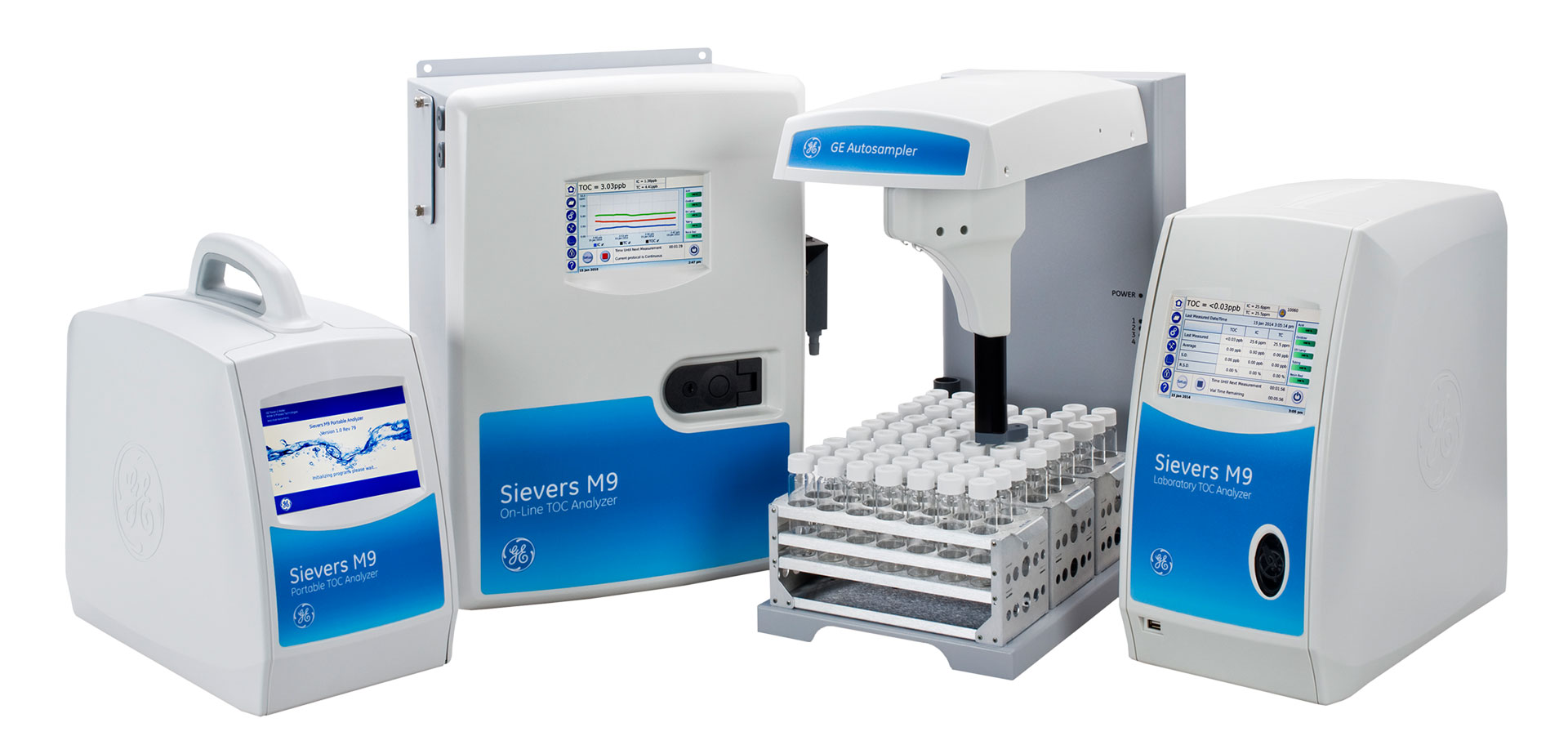Table Of Contents
- Introduction
- What is meant by Total Organic Carbon (TOC) Analysis?
- How does a TOC Analyzer Function?
- What is the Principle of TOC Analysis?
- What are the Applications of TOC (Total Organic Carbon) Analyzers?
- In Conclusion
- Key Takeaways
Introduction
TOC or Total Organic Carbon analysis, is known to be a fundamental method that is utilized in numerous fields, including water treatment, environmental science, pharmaceuticals, and the food industry.
It has a crucial role to play in specifying the quantity of carbon-containing compounds that exist in a specimen, which can have considerable implications for quality control, environmental monitoring, and research goals & objectives.
The principle backing a Total Organic Carbon Analyzer is embedded in the quantification of all carbon compounds, both organic and inorganic, in a given specimen.
This TOC analysis tends to provide a useful understanding of the level of pollution or organic contamination, which makes it a significant tool that ensures the purity and safety of water, monitors the quality of pharmaceutical products, and evaluates the health of the ecosystem.
Having a clear knowledge and understanding of the TOC analyzer principle is important for professionals, researchers, and any individual interested in the examination and conservation of the environment.
In this article, we are going to read about the meaning of Total Organic Carbon Analysis, how it works, its principles, and applications. Let's get straight into the article now!
What is meant by Total Organic Carbon (TOC) Analysis?
Total Organic Carbon (TOC) analysis is defined as a laboratory method that is utilized to measure the whole amount of organic carbon present in a specific sample.
Organic carbon encompasses carbon compounds that are actually derived from living organisms or through their byproducts.
TOC analysis is widely utilized in different fields such as water quality monitoring, environmental science, pharmaceuticals, and the food & beverage industry, in order to examine the organic content of specimens.
TOC analyzers are generally classified into two major types, they are as follows:
Non-Dispersive Infrared (NDIR) TOC Analyzers:
These types of TOC Analyzers make use of NDIR sensors in order to estimate the concentration of CO2 gas that is produced at the time of the oxidation process. NDIR TOC analyzers are frequently chosen for their accuracy and sensitivity.
UV-Persulfate TOC Analyzers:
These TOC analyzers make use of ultraviolet (UV) light and promote the oxidation of organic carbon compounds through persulfate. The resulting carbon dioxide is then estimated utilizing conductivity or a different detection technique.
How does a TOC Analyzer Function?
The TOC analysis procedure typically pertains to the following steps:
1. Sample Preparation
The specimen, which can be any liquid such as water, chemical solution, or wastewater, or a solid such as soil, organic matter, or sediment, is assembled and set up for analysis. For liquid specimens, they are generally filtered and acidified if required.
2. Combustion or Oxidation
In TOC examination, the organic carbon in the specimen is converted into carbon dioxide via oxidation or even combustion. This particular step tends to break down every organic compound in the sample into its elemental carbon structure.
3. Detection
The carbon dioxide that is produced is then identified and quantified utilizing numerous analytical methods, such as chemiluminescence, infrared Spectroscopy, or non-dispersive infrared (NDIR) detectors. The instrument helps in measuring the concentration of carbon dioxide produced at the time of combustion or oxidation step.
4. Calculation
The concentration of organic carbon in the specimen is measured on the basis of the amount of carbon dioxide identified and the known stoichiometry of the combustion or oxidation response.
What is the Principle of TOC Analysis?
The water sample first enters the TOC analyzer and goes via a pressure regulator that tends to handle the pressure for downstream elements. Thereafter, the sample is split up into two different pathways. In one of the pathways, a segment of the flow is directed to a bypass line, where a sensor (A) measures the conductivity or resistivity and temperature of the specimen.
In the other pathway, the remaining portion of the specimen passes through another conductivity sensor before flowing through an oxidation chamber. In this particular chamber, the specimen is exposed to intense UV radiation at 185 nm, which converts it into carbon dioxide in an effective manner.
Following the oxidation procedure, the sample streams into another conductivity sensor (B), which helps in measuring the temperature and conductivity once more.
The difference between the measurements obtained from sensors A and B is estimated and is instantly associated with the concentration of organic contaminants in the incoming water. The sample from sensor B then passes via a flow meter which is equipped with accurate flow adjustment abilities before escaping through an outlet, which can either be repudiated or recycled.
The values for Total Organic Compound, temperature, and resistivity, are displayed on the LCD screen of the instrument. All these values can be printed or transmitted to a computer through RS 232 serial interface ports. In addition, there is an option to acquire different output data in the form of a 4-20 mA analogue signal, which can be also attached to a DCS/PLC system.
What are the Applications of TOC (Total Organic Carbon) Analyzers?
TOC analysis will provide you with valuable and knowledgeable data about the organic content of a sample, which is essential in different types of applications:
a) Environmental Monitoring:
Total Organic Carbon analysis is utilized to examine the quality of natural water bodies such as lakes, oceans, rivers, and wastewater treatment processes. Extremely high TOC levels have the capability to imply the existence of excessive organic matter or organic pollutants, which might need remediation.
b) Research & Development:
TOC analysis is actually an essential tool in the research and development field in order to study organic matter, carbon cycling, and biogeochemical methods in different ecosystems.
c) Quality Control:
In several industries like food & beverage and pharmaceuticals, TOC analysis helps ensure the quality of the product and compliance with regulatory standards. It is able to identify specific impurities and contaminants in products and production procedures.
d) Soil & Sediment Analysis:
TOC analysis is widely utilized in soil science so that it becomes easy to evaluate the organic carbon content of soils, and this way it can provide insights into soil fertility as well as carbon sequestration.
In Conclusion
The TOC or Total Organic Carbon analyzer principle is an important analytical technique in water quality monitoring, environmental science, and numerous industrial applications. This specific principle rotates around the quantification of carbon content in organic compounds that exist in the sample.
By oxidizing the organic carbon to carbon dioxide and evaluating the outcome of CO2 concentration, TOC analyzers tend to provide valuable insights into the level of organic contamination in fluid and other elements.
The TOC analyzer principle provides various advantages, which include rapid analysis, high sensitivity, and the capability to catch sight of a wide spectrum of organic compounds. In addition, it plays a pivotal role in assuring the quality as well as safety of water sources, industrial processes, and pharmaceutical products. It is considered to be an essential tool for compliance with environmental regulations and quality control standards.
However, the Total Organic Carbon analyzer principle is a basic and indispensable analytical technique that contributes greatly to our capacity in order to monitor and defend the environment, ensure the quality of the product, and strengthen the integrity of industrial methods. Its constant development and application will certainly be able to address modern challenges associated with organic carbon analysis.
Key Takeaways
- Total Organic Carbon (TOC) analyzers help in measuring the amount of carbon in organic compounds in a specific sample.
- TOC analyzers depend on the principle of oxidizing organic carbon in order to produce CO2 i.e., Carbon Dioxide.
- There are two general types of oxidation methods, they are wet chemical oxidation and combustion.
- NPOC or Non-purgeable organic carbon and POC or Purgeable Organic Carbon (POC) are the two main means of TOC measurement.
- TOC analyzers are utilized in different kinds of industries for process control and water quality monitoring.
- Calibration and routine maintenance are important for accurate and precise TOC analysis.
- Having a clear understanding of TOC analyzer principles helps in ensuring dependable and constant measurements.

